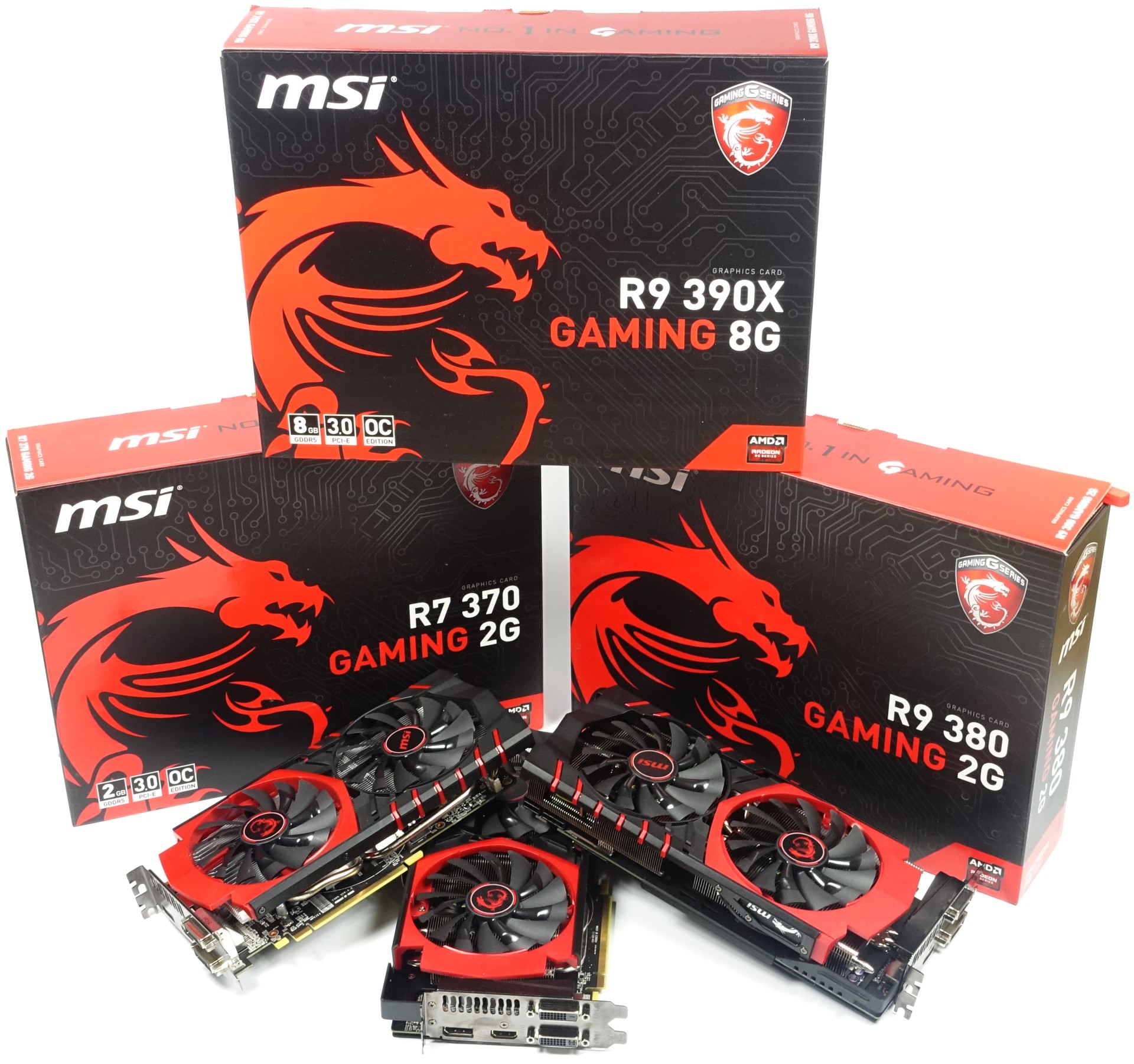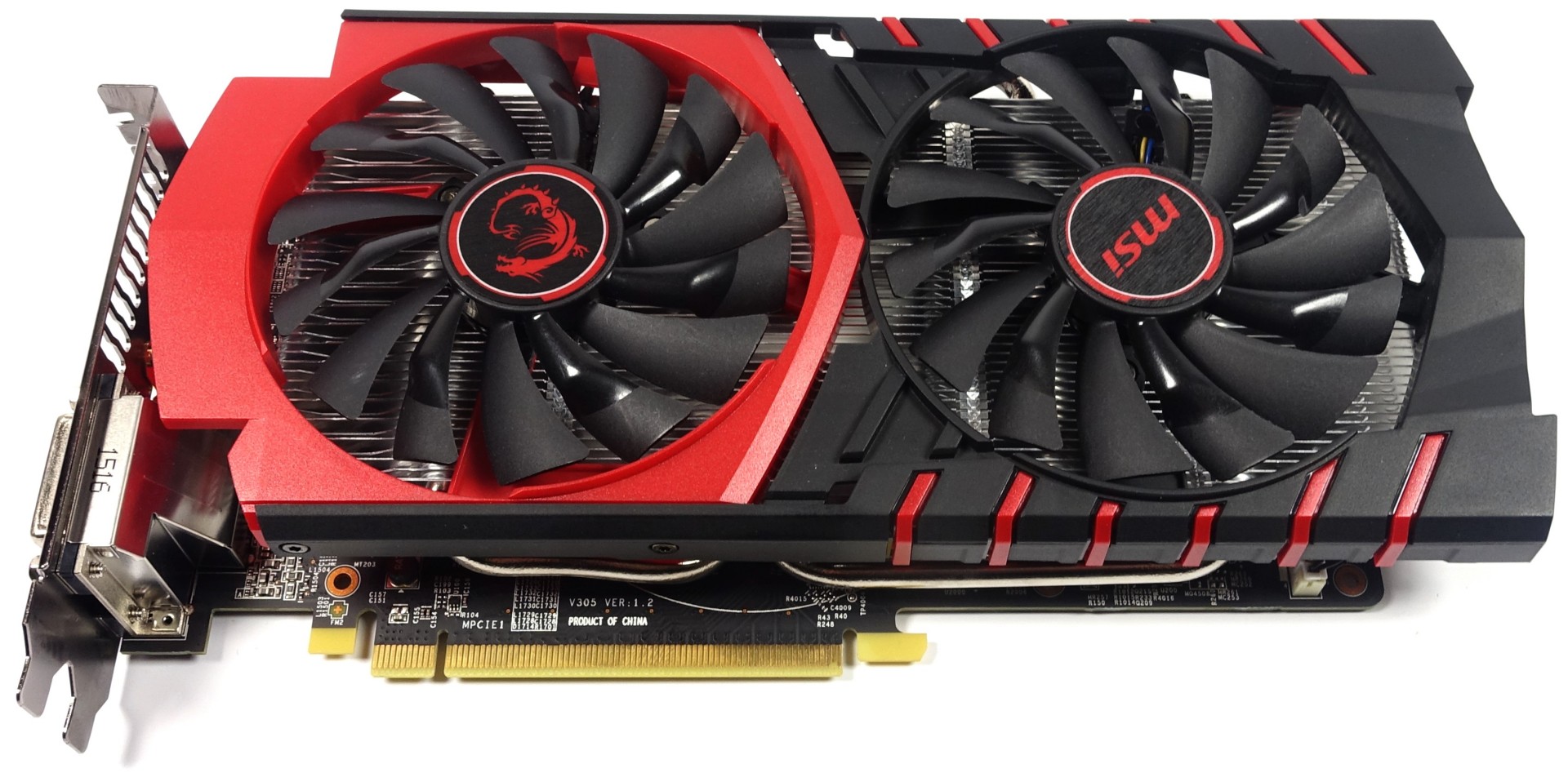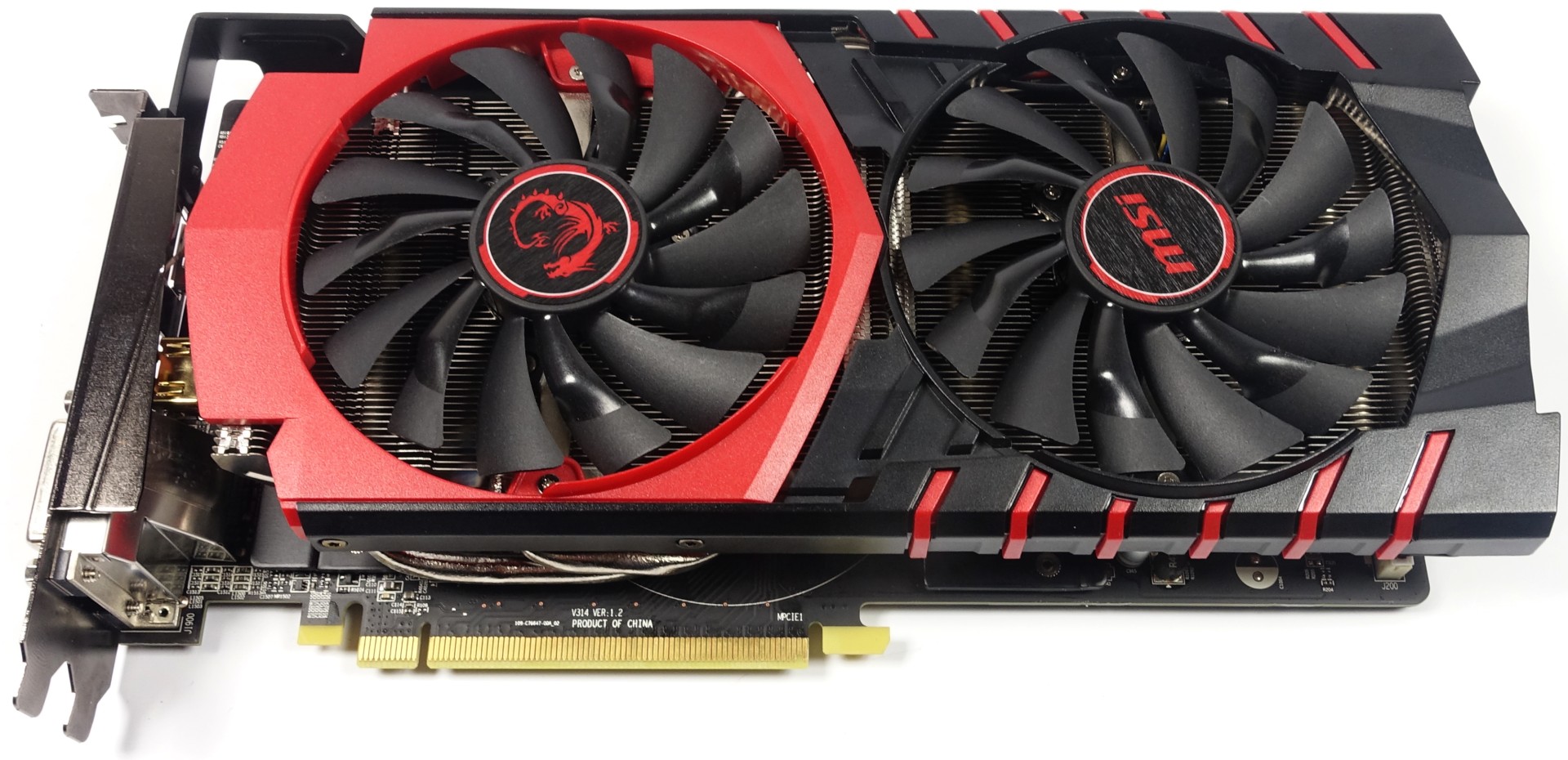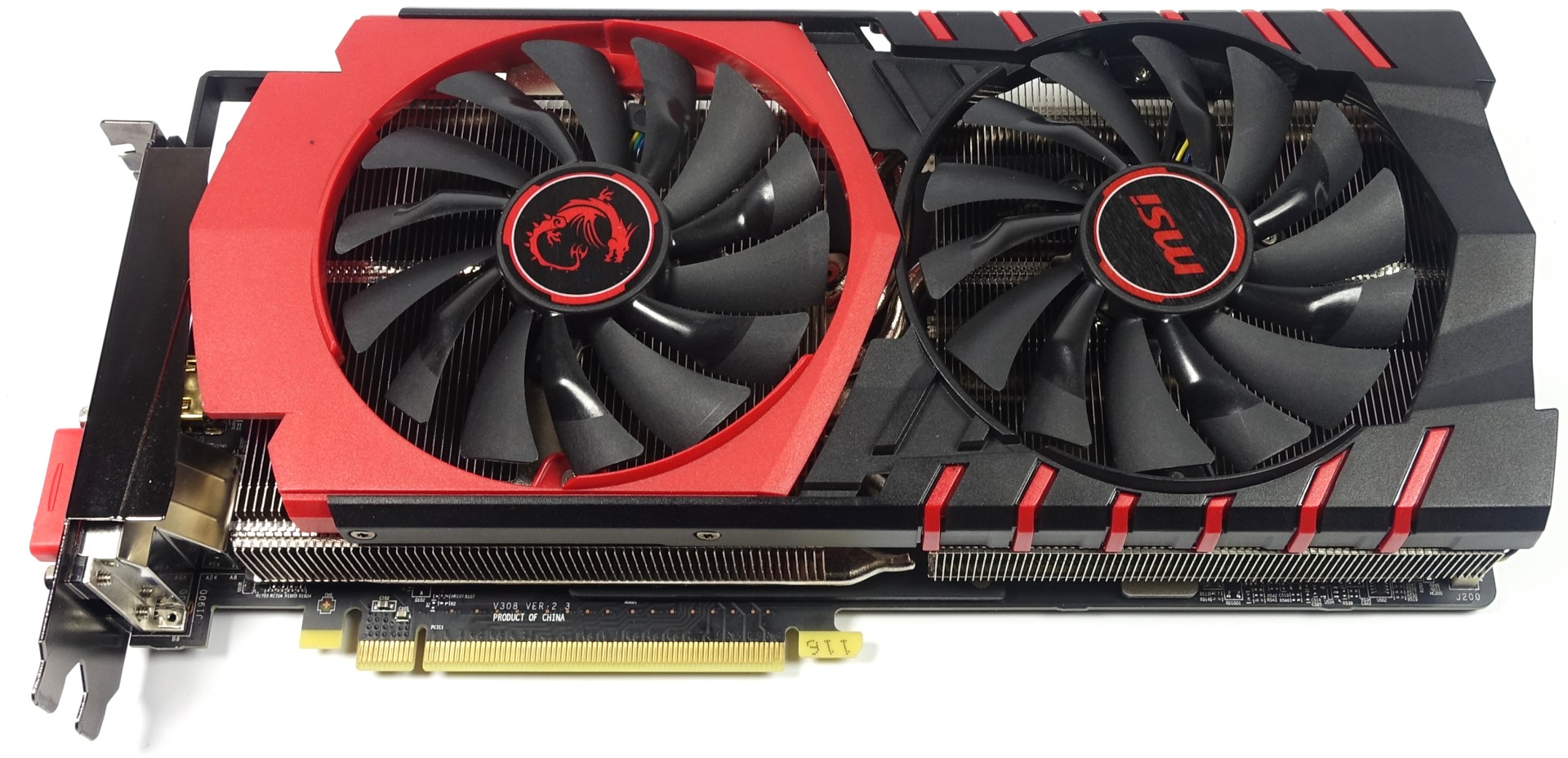AMD Radeon R9 390X, R9 380 And R7 370 Tested
AMD's 300-series Radeons dropped today, and we've got three MSI cards in the lab: the R9 390X Gaming 8G, the R9 380 Gaming 2G and the R7 370 Gaming 2G.
Introduction
Since AMD isn’t sending out reference versions of its newest graphics cards, we’re using samples from MSI to explore the new 300 series. The R9 390X Gaming 8G, R9 380 Gaming 2G and R7 370 Gaming 2G all sport GPU and memory overclocking from the factory. Further, MSI’s Zero Frozr cooler turns off in low load and temperature situations.
But let’s get back to the three new graphics cards, which, in reality, aren’t really that new. There’s actually a good reason for a feeling of déjà vu when reading this article: the GPUs have all been around for a generation or two.

AMD Radeon R7 370: Pitcairn Returns (Again and Again and Again)

In March of 2012, more than three years ago, Pitcairn first saw the light of day. It was in a card called the Radeon HD 7850 back then, and it later resurfaced as the R7 270. Pitcairn continues life as the Radeon R7 370. No longer content to rename just its products, AMD is renaming GPUs as well. This one is being referred to as Trinidad.
We’ll see when we get to the benchmarks that this smaller GPU shouldn’t be written off yet, even though it’s transitioning from mid-range down to the entry-level segment.
MSI’s new offering can call 1024 shaders and 2GB of graphics memory its own, and it’s is the smallest of the new graphics cards. We’ve gone over its technical specifications more than once and will consequently just refer you back to our original launch article from the year 2012: AMD Radeon HD 7870 And 7850 Review: Pitcairn Gets Benchmarked
AMD Radeon R9 380: Tonga Makes the Switch from R9 285 to R9 380

Antigua Pro (previously called Tonga) makes a reappearance as well in the Radeon R9 380. This card is another rebrand, plain and simple. But at least it’s built on a more recent version of AMD’s GCN architecture than Pitcairn. It was launched in September of 2014.
The only improvement over its predecessor seems to be higher GPU and memory clock rates. The card’s power consumption increases right along with them, which means that the new revision likely doesn’t include any actual changes.
Get Tom's Hardware's best news and in-depth reviews, straight to your inbox.
Once again, we won’t rehash the technical details. Instead, we’ll just take a look at the performance differences and what they’ll cost you on your electric bill. Those who really want to know all the details can always reference our original launch article, AMD Radeon R9 285 Review: Tonga and GCN Update 3.0.
It’s too bad that all Radeon R9 380 boards don't get upgraded to 4GB of GDDR5 memory. As it sits now, there will be two versions, one with 2GB and one with 4GB; the boards we've seen and tested are the former.
AMD Radeon R9 390X: Hawaii’s Return

Even the largest graphics card we benchmarked for this article, MSI’s R9 390X Gaming 8G, is just an old acquaintance with a new name. In this case, the Radeon R9 290X with its Hawaii XT GPU makes another appearance. It was launched on October 24, 2013, which is to say that it’s about 1.5 years old at this point. The GPU is now called Grenada XT.
This isn’t really an unprecedented move. Nvidia did the same thing with its Kepler architecture, renaming the GeForce GTX 680 to GeForce GTX 770. The company then came out with its Maxwell-based GeForce GTX 750 Ti and placed the 780, 780 Ti and Titan above it in the pecking order.
It looks like something similar is about to happen with the Radeon R9 390X, since AMD’s Fury cards are just around the corner.
Until then, Hawaii needs to hold the fort with more memory, a higher clock rate and even more power consumption than its predecessor. Its architecture hasn’t changed at all either, so we’re forgoing the theory part of the review again. Those interested in it can refer to our original launch article once more: Radeon R9 290X Review: AMD's Back In Ultra-High-End Gaming.
| Header Cell - Column 0 | HIS R9 290X IceQ WaterCooled | MSI R9 390X Gaming 8G | Gigabyte R9 285Windforce OC | MSI R9 380Gaming 2G | HIS R7 270iPower Boost | MSI R7 370Gaming 2G |
|---|---|---|---|---|---|---|
| Process | 28nm | 28nm | 28nm | 28nm | 28nm | 28nm |
| Transistors | 6.2 Billion | 6.2 Billion | 5 Billion | 5 Billion | 2.8 Billion | 2.8 Billion |
| GPU Clock | 1100MHz | 1100MHz | 973MHz | 1000MHz | 925MHz | 1050MHz |
| Shaders | 2816 | 2816 | 1792 | 1792 | 1024 | 1024 |
| Texture Units | 176 | 176 | 112 | 112 | 64 | 64 |
| Texture Fillrate | 193.6 GT/s | 193.6 GT/s | 109 GT/s | 112 GT/s | 59.2 GT/s | 67.2 GT/s |
| ROPs | 64 | 64 | 64 | 32 | 32 | 32 |
| Pixel Fillrate | 70.4 GP/s | 70.4 GP/s | 62.3 GP/s | 70.4 GP/s | 29.6 GP/s | 33.6 GP/s |
| Memory Bus | 512-bit | 512-bit | 256-bit | 256-bit | 256-bit | 256-bit |
| Memory | 4GB GDDR5 | 8GB GDDR5 | 2GB GDDR5 | 2GB GDDR5 | 2GB GDDR5 | 2GB GDDR5 |
| Memory Clock | 1350MHz | 1525MHz | 1375MHz | 1400MHz | 1400MHz | 1425MHz |
| Memory Bandwidth | 320 GB/s | 390.4 GB/s | 176 GB/s | 179.2 GB/s | 179.2 GB/s | 182.4 GB/s |
-
Grognak 390X at 4K is the only one showing anything that could be called an improvement and that's entirely due to the additional RAM, which you can already get on a 290X. I fear for the future.Reply -
envy14tpe Again I am left disappointed....AMD please stop doing this to me. So what I learned is the 390X is the same as the 290X at 1440p or below (which is 95% or more of gamers) and the 390X only excels at 4k but still only on par with the 980 (non ti). Looks like I'm abandoning AMD for my next GPU. damn it.Reply -
FormatC ReplyWhy did you ignore 390?
I can only test what I have. Too less samples :(
The 390X is'nt a bad card per se - it depends a lot at the price and your personal preferences. -
fudoka711 Wait, I think I'm misunderstanding something. Is the 390x a rebranding of the 290x, but costing $100 more??Reply -
HideOut ReplyNice to see 980 Ti still stomps everything, glad I bought one... a wise investment!
These are rebadge cards, their new cards are due out in days. Fanboy -
de5_Roy MSI R9 390X Gaming 8G's texture fillrate in the spec table (1st page) may have been incorrect. the gpu-z screeny shows 193.6 GTexels/sec.Reply